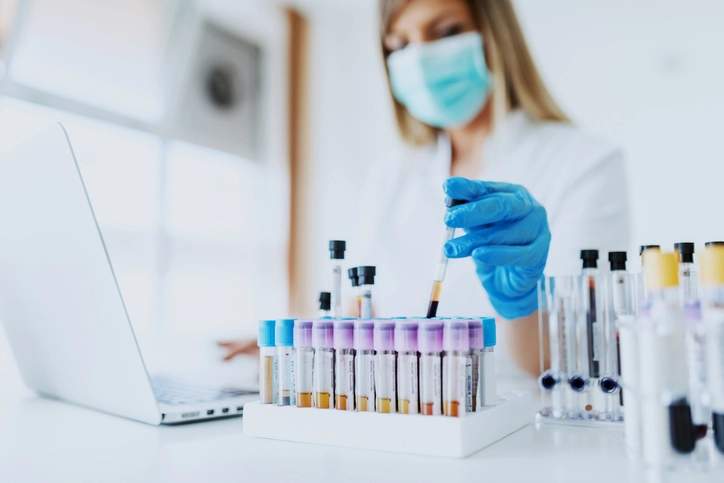With many advancements in the life sciences industry, the processes that technicians, managers and other staff members need to go through in labs are becoming more complex. This calls for new ways to effectively manage processes, information, technology, and other lab elements. In recent years, we’ve seen a huge surge in interest in incorporating LIMS software solutions into the laboratory. It’s a market expected to grow by 9.6% annually between now and 2032.
This article focuses on LIMS systems, how they work, and what they do. We’ll also look at the benefits this system can bring to your lab. LIMS platforms give your lab a complete information management solution. However, it is important to understand whether it’s the right choice compared to other options, such as an ELN. We’ll highlight the considerations to remember and help you understand if this is the right fit for your laboratory.
● How does a LIMS system work?
● How a LIMS differs from an Electronic Laboratory Notebook (ELN)
● When to consider LIMS implementation
Use the links above to skip ahead to the section you’re most interested in.
What is a LIMS?
LIMS (Laboratory Information Management System) is a platform that serves as a central hub for the lab. It can help manage a wide range of data and now plays a critical role in accuracy when researching diagnostics, prevention, treatment and other areas of disease. The LIMS system can also track and manage workflows involving lab instruments, laboratory staff, and test results.
A few different types of LIMS solutions are available, including on-site, cloud-based and even industry-specific systems. The one you choose will largely depend on your laboratory’s workflow and what you expect to get from it.
How does a LIMS system work?
A modern LIMS usually comprises different elements that come together to form a hub for a laboratory. However, it’s still important to understand exactly how LIMS works.
LIMS has several important goals, including data accuracy and data integrity. It helps to improve the accuracy of data recorded throughout the entire operation. At the same time, you can expect enhanced data integrity with fewer faults and errors in the lab.
The LIMS works in specific ways depending on the lab type, internal lab operations and the LIMS vendor you choose. However, we can look at an example to show a bit more about the process:
- When the sample enters the laboratory, it is entered into the LIMS platform. This includes generating a unique ID for the sample and often a barcode. The ID will contain additional data, such as the source, the volume, concentration, and when it was collected.
- The system will then track the sample in real time as it flows through various processes in the laboratory. Each technician who works with the sample will scan the barcode. This allows the LIMS to capture the timestamp, where the sample is in the lab, and who is working with it. The LIMS will also keep an audit trail of the sample – this data can be drawn up at any time by people with appropriate access.
- LIMS typically allows you to integrate lab equipment with the platform. This means that data from testing equipment can be fed directly to the LIMS, which will then associate it with the right sample ID.
The entire process allows lab managers to pinpoint the location of a specific sample easily and provides all the information needed for an official report later on.
What does a LIMS system do?
A LIMS will optimize a lab’s entire working process. Let’s look at some of the main functions you can expect from this system.
Sample Tracking
One of the most important functions of LIMS is to help you keep track of samples as they flow through your laboratory. With inventory management features, you can track resources such as lab supplies, reagents and other items necessary to process any samples.
The sample management function of LIMS starts at the entry – where the system registers it and, as we’ve mentioned, assigns it an ID. However, you can track it at any point in the sample’s lifecycle.
Protocol Execution
While there are different kinds of LIMS solutions available, many modern options will include connecting with equipment and automating certain protocols. You can create test schedules where the LIMS ensures that tests are done at the appropriate times.
The LIMS can then automate the activation of these programs at specific times according to your configuration. This also allows you to effectively assign samples to specific tasks, laboratory technicians or storage areas. During the protocol execution, the system also allows for data acquisition and collection.
Storage Organization
A LIMS can also help optimize the storage and management of samples in your lab. Some samples may require particular storage conditions. For example, biological samples may need to be frozen with liquid N2. The LIMS solution can ensure samples are sent to the proper storage department and stored under appropriate conditions. It can also provide easy retrieval of these samples through location tracking.
The main benefits of a LIMS
There are several benefits of LIMS and implementing them in your lab can be advantageous. LIMS can:
- Improves the overall accuracy of sample labeling and tracking.
- Helps to make collaboration throughout the lab environment more accessible and more efficient.
- Makes it easier for your lab to maintain regulatory compliance
- Allows you to create automation within the lab workflow.
- Allows you to easily track and manage inventory
How a LIMS differs from an Electronic Laboratory Notebook (ELN)
While there are some areas where a LIMS and an ELN may overlap in functionalities for advanced LIMS solutions, it’s important to recognize the differences between the two:
- LIMS: This solution provides a complete laboratory data management hub that helps improve laboratory efficiency. You’ll be able to manage the entire flow of a sample from the moment it enters the lab. A LIMS also makes it possible to automate certain processes.
- ELN: An Electronic Laboratory Notebook is more focused on researchers who need software that allows them to take notes while performing different operations. You can store those notes safely and easily share them with other lab operators, managers and technicians.
How much does a LIMS cost?
The initial cost of a LIMS may seem like a large sum. However, you shouldn’t overlook the long-term potential that this type of system can provide.
While it might be tempting to opt for more affordable solutions, investing in and implementing a LIMS can offer several advantages in the long term. While there’s an initial cost, this will be an investment, and when you consider the long-term total cost of ownership, it can be incredibly valuable for your lab.
When to consider LIMS implementation
Different kinds of labs can take advantage of a LIMS and use this implementation to overcome challenges such as:
- Frequently facing problems when processing data due to input errors.
- Not always knowing the exact location of a specific sample.
- Having trouble remaining compliant with regulations set out for laboratories.
- Experiencing obstacles due to lab workflows becoming more complex.
Discover Sapio LIMS
A LIMS solution can help your lab navigate complex workflow challenges more efficiently while also making sample tracking, organization and the overall lab process easier to manage. This system comes in different forms, including options that can easily integrate with your type of lab.
Sapio’s LIMS software was created to comply with the needs of your laboratory perfectly. The system gives you access to data management solutions. It also makes it easy to track everything from your inventory, to samples that enter your facility. Get in touch to learn more about our solutions.
If you want to see what Sapio can do for you, request a demo. You’ll see how our LIMS solution, with integrated AI and ELN software, can help streamline your laboratory.





